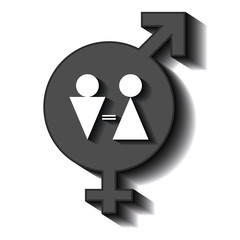This National Careers Week (NCW), Nifty Lifts is asking the nation to focus on gender equality in the workplace, and how to debunk the tired stereotypes that have been holding society back.
Do we attach genders to jobs?
Often, people have been held back in certain fields due to unfair gender bias. Not only do people assign gender roles to others within society, but they also stereotype jobs with these same set of arbitrary rules.
According to Nifty Lifts, we all fall into this trap. Even though times are most certainly changing, some career-based stereotypes are proving hard to shake. What’s more, when men and women do embark on the same career path, they are often treated differently, both by other people within the business and customers.
Gender bias
Ahead of National Careers Week, Nifty Lifts has taken a closer look at how gender bias develops in a newly created job, thanks to a study by BBC workplace magazine. The research studied in detail the gender-neutral role of microfinance loan manager, which is split roughly 50/50 between genders. The study considered how loan borrowers responded differently to female and male loan managers, who were providing the same service.
Borrowers tended to instantly label this job ‘male’ or ‘female’. If the first loan collector they were assigned to was male, the customer treated the role with more seriousness, assuming the loan manager had more authority and that this role was typically ‘male’.
On the other hand, those assigned female loan collectors began to think of the position as a ‘female’ role. They were seen to treat the repayments less seriously from then on — even if they were reassigned to male loan managers later. The study showed that the gendering of a job happens in an instant and that it can alter customers attitudes toward the role and the person completing it, says Nifty Lifts.
Checking our attitudes
Whether a job is considered traditionally male or female has an impact on how customers behave. Also, men and women are treated differently when displaying the same attributes in the workplace. An ambitious woman, for example, might be referred to as ‘bossy’, while a man showing the same behaviour is called ambitious. This trend can be seen from early childhood and must,
How can we make a change?
The workplace is evolving, and we are finally beginning to see change. Initiatives such as Women in STEM are encouraging more and more women to enter into traditionally male-dominated workforces such as engineering. In 2018, women made up 21.8% of the engineering sector, and 46.4% of girls aged 11 to 14 said they would consider a career in engineering, a figure that has
We are also seeing a positive change in the number of men entering the nursing profession. In 2019, there was a 9% increase in men applying to study nursing at university and many areas are working hard to keep these numbers on the rise. In Scotland for example, the ambition is to have a 25:75 male: female split in this industry by 2030. These numbers are set to keep increasing, and the gender imbalance seen in certain careers will hopefully lessen as time passes.
Hopefully, the future will bring with it a working landscape in which people feel they can embark on whichever career they want to. If a woman wishes to be a cherry picker operator, or a man wants to go into a caring profession, no one will blink an eye. The concept of gendered jobs is already disappearing as more and more people choose to break the mould.








